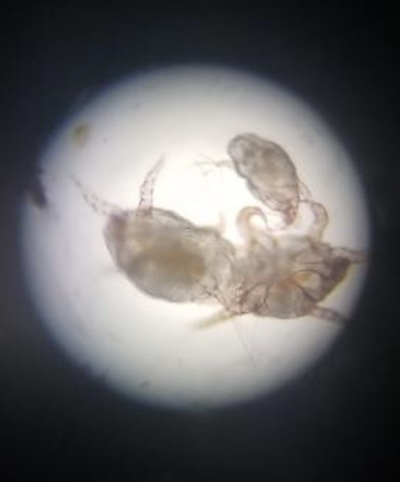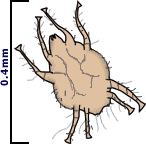How are the mites transmitted?
Ear mites are contagious. They can be passed from the mother animal to her offspring. Additionally, the mites can be spread to other pets within the household including cats, dogs, rabbits, hamsters, gerbils, mice, ferrets, etc. Humans are not affected.
What are the symptoms?

Puppies and kittens with ear mites will scratch around their ears and/or shake their heads. The amount of scratching and shaking depends on the severity of the mite infestation. With more advanced infestation, the ear canals will bleed and either fresh or dried blood will appear inside the canal. Dried blood resembles coffee grounds. If you peer into your pet's ears and notice a buildup of dark brown material that looks like 'coffee grounds', then your pet probably has ear mites, although a bacterial and/or yeast infection is also a possibility. Without treatment, ear mites could severely damage the ear canals and eardrum and cause permanent hearing loss.
What is the management?
Treatment of ear mites involves flushing the debris out of the ear and treating with either a daily or a one-time treatment. Various commercial ear preparations are available to kill the mites. These products contain an insecticide, and usually have to be used daily for 2-4 weeks. usually pyrethrin. Single dose treatments include ivermectin, Fipronil (Frontline), Selamectin (Revolution), Milbemite (milbemycin), and Acarexx (ivermectin). Depending on the severity of the infection, treatment may need to be repeated in 2-4 weeks. Because mites are very easily transferred between pets, it is best to screen all pets for ear mites. Most types of mites do not survive long off the pets, so treatment of the house and yard is usually not necessary.
Can I get ear mites from my pet?
Ear mites are not considered to be a zoonotic disease (a disease which can be transmitted from animals to humans).
Resources:








